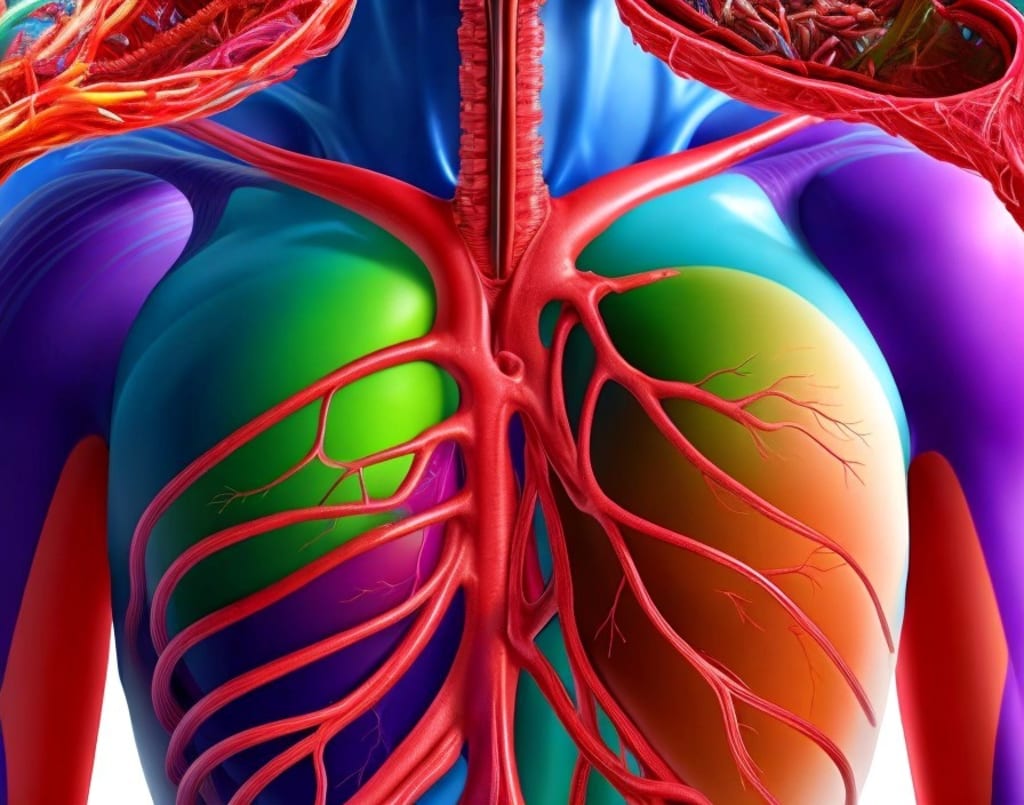The Vital Symphony: Unveiling the Wonders of Your Circulatory System
Keeping the Beat: How Your Heart and Blood Deliver Life Throughout Your Body

The Vital Symphony: Unveiling the Wonders of Your Circulatory System
Our bodies are intricate machines, a symphony of interconnected systems working tirelessly to maintain our health. Among these, the circulatory system plays a vital role – ensuring the continuous flow of blood, the lifeblood that nourishes every cell. Understanding this incredible system, from the pumping heart to the intricate network of vessels, allows us to appreciate its remarkable efficiency and the importance of maintaining its health.
The Power of Circulation: Fueling Your Body
Proper blood circulation isn't just a nice-to-have, it's absolutely essential for life. Our hearts act as powerful pumps, propelling blood throughout a vast network of vessels, reaching every corner of our bodies. This continuous flow serves a multitude of purposes:
- Delivering Nutrients and Oxygen: Blood carries essential nutrients absorbed from our food, delivering them to our cells for growth and repair. It also transports oxygen, vital for cellular respiration, the process by which cells generate energy (ATP) to power our bodies.
- Waste Removal: As our cells work, they produce waste products like carbon dioxide. Blood acts as a waste collector, transporting these byproducts to the lungs and kidneys for elimination.
The Heart: The Maestro of the Symphony
The heart, a muscular marvel located in the center of the chest cavity, is the driving force of our circulatory system. It's divided into four chambers:
- Atria: These two upper chambers, the right atrium and left atrium, act as receiving chambers, collecting blood from different parts of the body.
- Ventricles: The two lower chambers, the right ventricle and left ventricle, are the powerhouses of the heart. Their muscular walls contract with tremendous force, pumping blood throughout the circulatory system.
A One-Way Journey: The Two Circuits
Our circulatory system can be simplified into two circuits, each with a distinct purpose:
- Pulmonary Circulation: This circuit focuses on gas exchange. Deoxygenated blood from the body enters the right atrium, flows to the right ventricle, and then gets pumped to the lungs. Here, carbon dioxide is released and replaced with fresh oxygen. This oxygenated blood then travels back to the left atrium via the pulmonary veins.
- Systemic Circulation: This circuit delivers oxygen-rich blood to the entire body. From the left atrium, blood flows to the powerful left ventricle, which pumps it out through the aorta, the largest artery in the body. A network of arteries, arterioles, and capillaries then transport this oxygenated blood to every tissue and organ. Once the oxygen is used and waste products are collected, the blood returns to the right atrium via the veins, completing the cycle.
Keeping Time: The Rhythm of the Heart
The rhythmic "lub-dub" sound we hear through a stethoscope is the heartbeat, a testament to the heart's tireless work. These sounds are created by the opening and closing of valves within the heart chambers. These valves ensure one-way flow of blood, maximizing its efficiency. Abnormalities in these valves can disrupt the heartbeat, creating a murmur detectable by a doctor.
Fueling the Symphony: Maintaining a Healthy Heart
Just like any finely tuned machine, our hearts require care to function optimally. Here are some key ways to nurture your cardiovascular health:
- Healthy Diet: Choose a balanced diet rich in fruits, vegetables, and whole grains, limiting saturated and trans fats, added sugar, and salt. These dietary choices can significantly reduce the risk of heart disease.
- Regular Exercise: Physical activity strengthens the heart muscle and improves blood circulation. Aim for at least 150 minutes of moderate-intensity exercise or 75 minutes of vigorous-intensity exercise per week.
- Manage Stress: Chronic stress can elevate blood pressure and negatively impact heart health. Practice relaxation techniques like yoga, meditation, or deep breathing to manage stress levels.
- Maintain a Healthy Weight: Excess weight can put additional strain on the heart. Losing weight and maintaining a healthy body mass index (BMI) can benefit your cardiovascular health.
- Don't Smoke: Smoking is a major risk factor for heart disease. Quitting smoking is one of the most impactful choices you can make for your heart health.
Facing the Music: Common Cardiovascular Conditions and Treatments
The human circulatory system, while incredibly efficient, can sometimes face challenges. Here's a look at two prevalent conditions and their treatments:
- Heart Disease: Heart disease is the leading cause of death globally, affecting millions of people. It encompasses several conditions, including coronary artery disease (CAD), which occurs when arteries supplying blood to the heart become narrowed or blocked by plaque buildup.
- Risk Factors: High blood pressure, high cholesterol, diabetes smoking, family history of heart disease, and a sedentary lifestyle are all risk factors for heart disease. Early detection and treatment are crucial. Lifestyle modifications like a healthy diet, regular exercise, and stress management can play a significant role in preventing and managing heart disease. In some cases, medications to lower blood pressure or cholesterol, or procedures like angioplasty (opening blocked arteries) or bypass surgery (creating a new pathway for blood flow) might be necessary.
- Stroke: A stroke occurs when blood flow to part of the brain is interrupted, depriving brain cells of oxygen and nutrients. This can lead to permanent brain damage and disability. There are two main types of stroke: ischemic stroke, caused by a blood clot blocking an artery, and hemorrhagic stroke, caused by a weakened blood vessel bursting.
- Warning Signs: According to the American Heart Association's "FAST" campaign, recognizing the sudden onset of Face drooping, Arm weakness, Speech difficulty, Time to call emergency services can help ensure timely treatment for a stroke. Quick medical intervention is crucial to minimize brain damage. Stroke rehabilitation can help patients regain lost function, but preventing strokes through healthy lifestyle habits and managing risk factors like high blood pressure is paramount.
By understanding these common conditions and the importance of a healthy lifestyle, we can empower ourselves to take charge of our cardiovascular health and keep our vital symphony playing a harmonious tune.
About the Creator
suren arju
Hi there! I'm Suren, your startup guide. Entrepreneur, writer, dreamer - I share insights, tips & stories to fuel your startup journey. Ready to explore, learn & win together? Join me & let's redefine how we launch, learn & leap!
Enjoyed the story? Support the Creator.
Subscribe for free to receive all their stories in your feed. You could also pledge your support or give them a one-off tip, letting them know you appreciate their work.





Comments
There are no comments for this story
Be the first to respond and start the conversation.